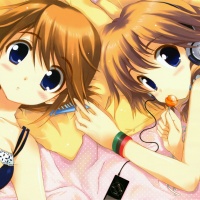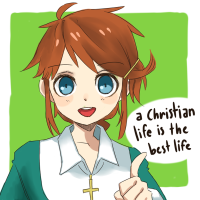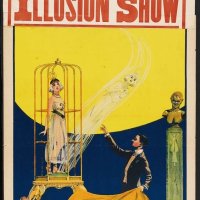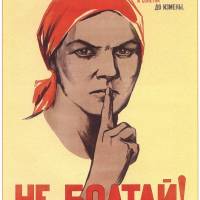Candles and Cannons: Part 5

Warszawa
This is from a chapter for the original version of Gravity From Above that was never written about my journey in search of European Puppetry that would eventually become the beginning of my Gravity From Above project. This is the fifth part of a long chapter on Poland that initially has little to do with puppetry and everything to do with history and travel. It’s worth a read. More to come!
Poznan and Warsaw, Poland
April 4– 8, 2005

The Palace of Culture and Science in the heart of Warsaw, and the reason I had trouble finding puppet theatres in Poland. Teatr Lalka means puppet theatre. It occupies a huge wing of the Palace. Would you expect to find a puppet theatre here?
Later that night Marta drove me across Warsaw. She wanted to show me something. On the way our passage was halted by a group of chanting marchers. Marta seemed a bit put out. These were soccer hooligans who were themselves affected, however temporarily, by the death of the Pope. Marta told me that they had declared a truce against rival Polish football organizations in honor of the late pontiff. But she didn’t believe a word of it. “In a week they will be just the same as always.” Nevertheless I was impressed that the Pope’s death would have any implications for them at all. I would understand Marta’s skepticism more thoroughly in a couple of days’ time.
We continued on towards Aleje Jana Pawla II, the street named after Pope John Paul II several years earlier. There was actually some controversy because strip clubs and other joints distinctly not in the spirit of the Pope had been flourishing on the street that bore his name. But a new phenomenon was occurring as we drove along the street; candles were sprouting up by the row. Marta and I had dropped the car off at the laboratory where Darek worked. We walked up Al. Jana Pawla II and as we did the number of candles increased from a smattering to a steady row that continued for block after block. Marta had brought a candle to add to the shrine. Along the way the wind and light rain had doused a few candles. We took turns relighting them as we passed along the course. Marta said to me at one point, “ I think many of us are just now realizing what an important man the Pope was. I didn’t think about him too much. He was always there. But I have been thinking about him this week. It’s really something to see how much he was loved by the people. He did so much for us. He did so much for so many people. I am seeing now that I loved him too.” Marta spoke in a calm yet emotional voice. When the time came she placed her candle on the ground and was quiet for a moment.
I gazed up and down the street. A single row of flickering candles stretched as far as you could see in either direction. In many places the row was thickening by two or three or more. Here and there people knelt to light candles in the rain. Some stood in thought, or possibly prayer, alone yet together in their deep feeling. I was struck by this deep expression of faith by the Polish people. Naturally you can’t really ‘see’ faith in anyone, but you can experience it. In humble ways, without ever witnessing anything resembling fanaticism, the Poles expressed something I think I have rarely, if ever, seen before. I received a deep stirring within myself as well. As we walked towards Marta’s apartment, not too far from this place, I felt myself to be a witness to an unrepeatable moment in the life of this nation. There would never be anyone like Pope John Paul II again. And here in Warszawa hundreds of thousands of candles spoke with unlimited eloquence in tribute to one man who had had shown love and not selfishness.
I said my farewells to Marta after receiving more instructions on the use of the bus and a couple of complimentary bus tickets to get me started. We would meet again tomorrow. And then there was the question of puppet theatres in Warsaw as well.

Sign for a puppet theatre.
Thursday morning came after a good night’s rest. Marta called me to tell me that she had been walking to work when she saw the building that housed the Teatr Lalka. ‘Lalka’ means puppet in Polish, ‘lalki’ is the plural. Taking the initiative for me she had contacted them. She had been talking to an accommodating woman named Anna Bojarska. They were of course closed to the public till Saturday but Pani Bojarska said I could come down that afternoon to watch them rehearse. She also said that it might be possible to get an interview with the Artistic Director of the theatre. Marta had been helping me as well to contact the Teatr Lalek Guliwer, Guliwer as in Gulliver’s travels. But our contacts had become a little silent on that front. So contacting the Teatr Lalka was a brilliant idea, in fact it was exactly the right place to have contacted all along. I would indeed show up for rehearsals around three o’clock, Marta would meet me there later. Meanwhile I would try my hand at the local bus stop and ride into downtown Warsaw for the afternoon.
After waiting at an anonymous bus stop for half an hour, while watching several buses pause to take people to some other destination or whiz by completely, my bus eventually came. I watched the Japanese and Korean embassies pass beneath the bus window. I followed along with the Warszawa map I had picked up in Poznan and tried to guess where exactly the terminus was in relation to the Palace of Culture and Science, the home of the Teatr Lalka. Warsaw is a big city and the map is as complicated, naturally, as anything I’ve ever seen. But without it I would have been completely lost. Buying a map is essential to any truly independent travel. And that goes along with some basic research on where you are going. I have actually met people in my life who have told me that they were, say, traveling to Japan in a few weeks. When asked if they had done any reading on the country or culture they would proudly say ‘No’. And then remark that they enjoyed being surprised by a culture. Or is it being blind to that culture? I can’t imagine coming to Poland with no understanding of its history. What is Warsaw going to mean to you but a collection of rather glum buildings? The only way to even begin to understand a place like this is to get out the books and maps and to enter into its meaning. Then it begins to come alive in a way that no tourist destination ever will. Those faceless buildings you pass in the bus become the remaining monuments of a recent epoch of repression.
But in truth Warszawa, like Berlin. conferred the ambience of a perpetual construction zone. It had that same unfinished feel, the legacy of both war and of gray dour communism. I alighted the bus and strolled through the city looking for the Palace of Culture. Marta had spoken of the place as if I should be able to find it fairly easily. I decided that the better part of valor would be to locate the building before going too far. The map indicated that it was several blocks ahead of me.
As I walked the streets I studied the Polish faces. It was curious to me how many of them ‘looked’ Polish. Of course, in all countries people appear to be residents of their own lands. Even in multiethnic America people have an American appearance. But that’s an attitude more than a physical resemblance. In France the nose predominates, someone once called the French the most ornithological people on earth. There is an undeniable truth to that observation, once you recognize it you can never stop seeing it. The English have several modes ranging from upper crust swan to cockney bulldog with several species of herbivore predominating in the counties. Poles, to these eyes, have an almost feline quality to them. Their eyes, set on high Slavic cheekbones, can disappear into slits when laughing and smiling. Or they can dart around nervously wondering where their next meal is coming from. Their faces often come to a triangular point at their chin and their noses, though slightly prominent, are not nearly as strong as their Czech cousins below them. And their faces always seem ready for a smile somewhat askew and accepting of life’s ridiculousness and difficulty. Maybe I’m reading too much into this. Of course, I’m painting this canvas with the broad brush of a foreigner. Generalities are after all just that. Or perhaps what I’m viewing is the ethnic homogenization resulting from the still controversial redrawing of borders by the Allies after of World War II. But visit Poland for yourself, make your own observations.
And I found Polish female faces quite fascinating. Naturally there are many beautiful Polish women walking the streets, but then again there are beautiful women all over the world. New York City, my old stomping grounds, was filled with women who could extract your eyes directly out of their sockets. Paris, likewise, was not shy of the les belles femmes. And the Czech Republic has an inordinate number of gorgeous girls. My eyes would catch the stunning face from time to time but that wasn’t what caught my attention. There was a complexity and depth to even the face of the average Polish woman that hit me in a remarkable way. It was as though each face concealed an elaborately involved narrative. These were not happy-go-lucky Californian faces. They did not invite you in. There was no sign on the door advertising a good time. They did not put you off either. It was neither aloofness nor Scandinavian taciturnity. It was something much more mysterious. You were welcome to be there, but like Polish history it wasn’t going to be a pleasant or superficial trip to Disneyland. The Polish laws of hospitality still ruled supreme and so did the labyrinth of Polish history. To me this was an utterly seductive combination. And it was written in the faces of the women as I passed them on the streets of Warsaw.
I stopped as I was walking. There across the street and across a large space was the building I was looking for. I had already passed it in Marta’s car at night. The Palace of Culture and Science wasn’t just a building with a name on it. It wasn’t even a grand official structure like the Metropolitan Museum in New York City. This was indeed something else again, something frightening and eerie. Arising from the center of Warsaw like a vast dismal colossal corroded gothic monolithic cathedral stood the building Stalin had commissioned to demonstrate his potency over the conquered land of Poland. Completed in 1955, this titanic beast raised its panoptikon brow over the ruins of Warszawa some 231 meters, remaining as of this writing some fifty years later, the tallest structure in the land. It was not hard to imagine some crazed communist Quasimodo up there in the upper balconies of this immense gray bulk looking down upon the encroaching Marriott, the billboards the size of football fields and other postmodern wonders with venom and bile laughing at them all ready with the boiling oil. This looming nightmare of Stalinist Gothic easily inspired such apparitions under the darkening Polish skies. And this is where the puppet theatre was located?
To cross the vast intersection at Aleje Jerozolimskie I had to descend into a passageway that ran under the street. I soon found myself in an underground arcade that seemed to stretch out endlessly in more unfathomable labyrinthine patterns. While trying to cross the street I consistently came up at a mistaken egress. At one point I found myself entering a metro station, which had not been my intention. I exited only to find myself on yet again the wrong side of the street. I watched people entering the station and watched musicians being approached by the police. I eventually found myself moving towards the imposing monolith. There was one feature I have forgotten to mention. Something I’m sure Uncle Joe wouldn’t have approved of. Draping ten floors down off one side of the building was a banner displaying a huge photo of the Pope. Hanging from another side was the yellow and white Papal flag, just as large, just as unimaginably incongruous. After a long walk I slowly gained purchase on what appeared to be the entrance to the Stalinist temple. I climbed the steps. I looked at the two grand theatres on either side of the defile, neither seemed to be a puppet theatre, but then again I wasn’t really expecting the Teatr Lalki to be housed behind the sandstone pillars that these institutes required. I was looking for something a little humbler. I entered the building and promptly became so lost that I couldn’t tell you which direction I was even pointed in. I looked for a directory. After about fifteen minutes I finally found one. Evidently the Teatr Lalka was on the outside of the building. And so I found myself back out on the street now somewhere near Warszawa Centralna. I slowly walked a long way around the beast craning my head past rough hewn statues of heroic female proletarian deities. This was the entrance to a vast museum. In due course I walked my way around the edifice to find that indeed the Teatr Lalka was located behind yet more massive columns.
After eating lunch in the encircling park I waited to enter the theatre and to watch the rehearsals. I will save my journey into the Teatr Lalka for the next chapter. (Which I never wrote though you can also read a much shorter version of my journey elsewhere on this site, which does get into more detail about Polish puppetry. Click this .) Marta met me during the rehearsals and arranged another meeting for me on Saturday in which she would come as my interpreter. We left as the evening was darkening. Marta drove me back to Elka’s apartment.

Warsaw being eviscerated by the Nazis as the Soviets wait patiently across the river.
I looked out from Elka’s strangely imprisoned balcony across the highway and the Wisla River, (pronounced vees-wa and sometimes written Vistula on foreign maps). Here I was in Warszawa in a communist apartment building occupying ground that had once been leveled during World War Two. The story of Warsaw is one of the great brutal tragedies of that age that now seem almost impossible to conceive. How hard it is for children who nursed at the teat of MTV to imagine the extreme absence of the virtual that occurred in this city over sixty years ago. Fortunately there are still a few living souls who remember. But what happens when they too have vanished? Strains of Wojciech Kilar’s Father Kolbe Requiem rose up in my memory, images from Roman Polanski’s The Pianist, the savage crows of the suicidal Jerzy Kosinski’s Painted Bird. The Wisla River, the main artery of Poland, flowed by a few blocks away. In 1944 on the other side of this river in the district of Praga, Konstantin Rokossovsky’s Red Army had been instructed not to move a muscle. On this side the Poles had risen up against the Nazis in the hopes of setting up a free Poland before the Russians could arrive. The Germans, suspecting a no win situation between hundreds of thousands of rebellious Poles and the approaching Red Army, were deciding whether they should leave town. And then they realized that the Russians were not coming. And so they turned around and taught Warsaw a lesson they would never forget. They razed everything on this side of the river. And the Russians just watched. Debates still rage as to exactly what the orders were. Then the Red Army crossed the river to pick up the pieces. Thus went the demolition chessboard of the Second World War. Kiev, Tokyo, Berlin, Manila, Dresden, Iwo Jima, Hiroshima – all razed by the moves of the chess pieces of war. Sitting in a cement apartment building in Warsaw looking over the Wisla River I wondered why the largest event in history, World War Two, meant almost nothing back in the land of my birth. What did these historical moments mean to a stoned high school student channel surfing in Redondo Beach or a family on their way to Las Vegas to spend the yearly income of an Laotian family on their extended weekend holiday. I live in a country where the quality of life is measured by the absolute abstraction of the word ‘fun’.
Poland isn’t an exactly ‘fun’ place to visit. It’s a little too real. Sixty years ago it was a ruin. Twenty-five years ago it was in the midst of a genuine social revolt against its communist overlords. This week the man who had done more than anyone to inspire that Solidarity Movement, Pope John Paul the Second, had died and the country was mourning. And I couldn’t think of anywhere else on earth I would rather be.
One more coming soon!
Byrne Power
Tbilisi, Georgia
December 23th 2020
…..
If you think what we are doing here is valuable… You can contribute to the Anadromous Life through PayPal:
Keep me afloat in Tbilisi! Click this link!






